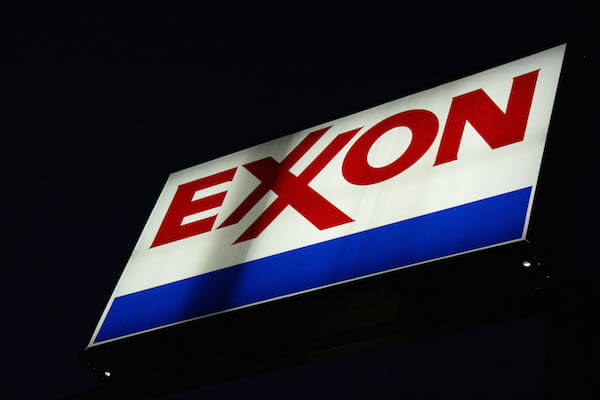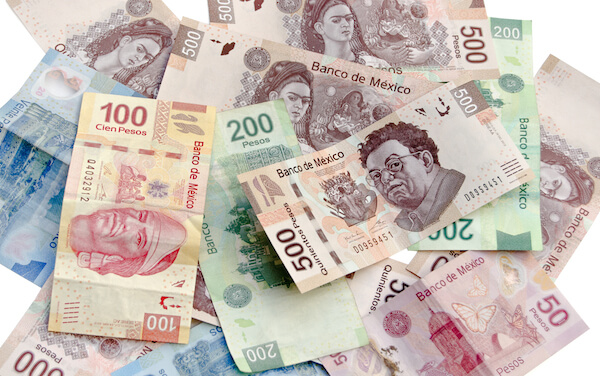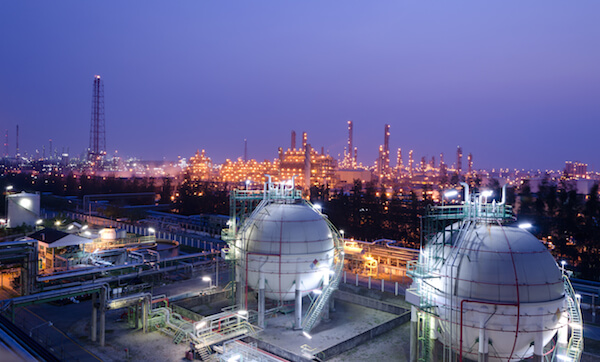Tag Archive for: oil
The longer OPEC and other producers talk about a ceiling on crude output, the more doubts grow in the market.
Money managers increased wagers on falling prices by the most in three months as a meeting between Russia and Saudi Arabia ended without specific measures to support prices. Producers have pledged to discuss action in Algiers later this month.
“The more they talk, the less people listen,” said Michael D. Cohen, an analyst at Barclays Plc in New York. “If you look at the actual statements from the Saudis, there’s not a lot of enthusiasm. They’re saying that either they don’t believe a substantial intervention is needed right now or that if other producers want a freeze, they’ll go along.”
Saudi Arabia’s Energy Minister Khalid Al-Falih said on Sept. 5 that he’s optimistic producers will agree to cooperate in Algiers. He spoke after meeting with his Russian counterpart, Alexander Novak, at the G-20 summit in China. Novak said that a freeze in production by OPEC and Russia would be the most effective way of stabilizing the market.
The International Energy Forum, including 73 countries that account for about 90 percent of the global supply and demand for oil and natural gas, will meet in the Algerian capital Sept. 26-28. The Organization of Petroleum Exporting Countries will hold informal talks on the sidelines of the gathering.
Parsing Words
“Everyone is sifting for clues on whether OPEC will reach an agreement to limit production or leave it uncapped with the potential for higher output,” said Tim Evans, an energy analyst at Citi Futures Perspective in New York. “At this point we’re waiting for the outcome of the talks. A lot of people are standing to the side while others are building positions with a specific view in mind.”
A freeze deal between OPEC members and other producers was proposed in February. A meeting in April ended with no accord because Iran refused to join, while Saudi Arabia insisted that its rival take part. Iran has said it’s too soon to cap output as it’s still restoring production curbed by sanctions.
Speculators bolstered their short position in West Texas Intermediate crude by 34,954 futures and options during the week ended Sept. 6, according to the Commodity Futures Trading Commission. Bets on rising prices declined.
Prices Drop
WTI futures dropped 3.3 percent to $44.83 a barrel in the report week and prices lost 1.6 percent to $45.15 at 9:18 a.m. New York time.
Futures surged Sept. 8 after the Energy Information Administration reported U.S. crude inventories fell 14.5 million barrels in the week ended Sept. 2, the biggest drop since January 1999. Prices retreated the next day as speculation grew the supply drop was a one-off caused by a tropical storm that disrupted imports and offshore production.
Money managers’ short position in WTI climbed to 130,274 futures and options. Longs fell 1.9 percent. The resulting net-long position dropped 19 percent. Net-long positions in Brent crude decreased by 37,226 contracts, according to ICE Futures Europe.
In other markets, net-bullish bets on gasoline declined 32 percent to 11,148 contracts. Gasoline futures dropped 9.1 percent in the report week. Net-long wagers on U.S. ultra low sulfur diesel tumbled 56 percent to 9,840 contracts. Futures declined 4.3 percent.
Gambling Momentum
“There’s a lot of gambling taking place,” said Stephen Schork, president of the Schork Group Inc., a consulting company in Villanova, Pennsylvania. “A lot of money managers are betting that a bottom has been put in but I’m skeptical.”
U.S. crude stockpiles remain at their highest seasonal level in more than 20 years. Refineries plan maintenance programs for September and October when fuel demand is lower. Over the past five years, refiners’ thirst for oil has dropped an average of 1.2 million barrels a day from July to October.
“The market will probably yo-yo in a range through the maintenance season but there’s downside risk,” Schork said. “If demand isn’t a strong as hoped and crude inventories rise, the market could take another leg lower.”

Mexico’s government on Thursday set out plans for a bigger-than-anticipated cut in public spending in 2017, with struggling state oil company Pemex earmarked for a 100 billion peso ($5.36 billion) reduction in funding.
New Finance Minister Jose Antonio Meade said the budget foresaw planned spending cuts of 239.7 billion pesos ($12.83 billion), targeting a primary surplus of 0.4 percent of gross domestic product (GDP) in 2017. It would be the first such surplus since 2008.
Of the cuts, 100 billion pesos fall on Pemex, which is already facing a funding squeeze and has racked up multi-billion dollar losses for years. Since the government ended its oil and gas monopoly nearly three years ago, Pemex has faced stiff competition from the private sector.
“Pemex is making the biggest contribution to the cuts,” Meade said, presenting the budget proposal to Congress a day after he was sworn in as finance minister following the resignation of Luis Videgaray.
In late 2013, the government threw open the industry to private capital to reverse a protracted slide in oil production, but falling crude prices have undermined those efforts.
Currently running at some 2.16 million barrels per day (bpd), Mexican oil production will slip to an average of 1.928 million bpd in 2017, the budget forecasts. The last time Mexican crude output fell below 2 million bpd was in 1980.
Still, the budget does foresee changes aimed at easing Pemex’s heavy tax load.
Less than two years remain before the next presidential election, and President Enrique Pena Nieto’s government is struggling to ramp up economic growth, having fallen well short of its original ambition to achieve annual rates of 5-6 percent.
Hurt by uneven U.S. demand for its goods, Mexico’s economy shrank in the second quarter for the first time in three years.
Next year, the budget foresees growth of between 2 and 3 percent, compared with 2.0-2.6 percent in 2016.
Despite the 2017 cuts – well above the 175.1 billion the government eyed in April – non-discretionary spending was expected to rise by 144.3 billion pesos, inflated by higher financing costs and a slide in the peso’s value.
Next year the government foresees an overall deficit of 2.9 percent of GDP, 0.6 percentage points less than the 2016 target.
The budget foresaw the peso averaging 18.2 per dollar in 2017, and an average price of $42 per barrel for Mexican crude, in line with the government’s hedging program. ($1 = 18.6600 Mexican pesos)

OPEC has done it again.
Talk of a potential deal to freeze output helped push oil close to $50 a barrel and prompted money managers to cut bets on falling prices by the most ever. West Texas Intermediate, the U.S. benchmark, went from a bear to a bull market in less than three weeks.
OPEC is on course to agree to a production freeze because its biggest members are pumping flat-out, said Chakib Khelil, the group’s former president. Saudi Energy Minister Khalid Al-Falih said that the talks may lead to action to stabilize the market.
“This is all courtesy of some very well-timed comments from the Saudi oil minister,” said John Kilduff, partner at Again Capital LLC, a New York hedge fund focused on energy. “They’ve been successful over the last year in jawboning the market, and this is the latest example.”
Hedge funds trimmed their short position in WTI by 56,907 futures and options during the week ended Aug. 16, the most in data going back to 2006, according to the Commodity Futures Trading Commission. Futures rose 8.9 percent to $46.58 a barrel in the report week and closed at $48.52 a barrel on Aug. 19. WTI is up more than 20 percent from its Aug. 2 low, meeting the common definition of a bull market.
“This was a very short market so we were bound to get some covering,” said Stephen Schork, president of the Schork Group Inc., a consulting company in Villanova, Pennsylvania. “You probably won’t hear a lot from OPEC with prices up here, but if we get down to where we were a few weeks ago we can expect to hear more.”
Informal Talks
The Organization of Petroleum Exporting Countries plans to hold informal talks to discuss the market at the International Energy Forum next month in Algiers. Russian Energy Minister Alexander Novak said that the nation was open to discussing a freeze.
Talks to implement a production freeze collapsed in April when Saudi Arabia said it wouldn’t take part without Iranian participation. Iran was restoring exports after sanctions over its nuclear program were lifted in January.
Saudi Arabia, Iran, Iraq and non-member Russia are producing at, or close to, maximum capacity, Khelil said in a Bloomberg Television interview on Aug. 17. Saudi Arabia told OPEC that its production rose to an all-time high of 10.67 million barrels a day in July, according to a report from the group.
Ample Stockpiles
Declining crude and gasoline stockpiles in the U.S. also bolstered the market last week. Crude supplies dropped by 2.51 million barrels as of Aug. 12, Energy Information Administration data show. Gasoline inventories slipped 2.72 million barrels during the period. Stockpiles of both crude and gasoline remain at the highest seasonal levels in decades even after the declines.
“There’s a high level of uncertainty right now, so fairly small news can move the market a lot,” said Michael Lynch, president of Strategic Energy & Economic Research in Winchester, Massachusetts. “It still remains the case that we have a huge surplus of supply and aren’t going to see it disappear anytime soon.”
Money managers’ short position in WTI dropped to 163,232 futures and options. Longs, or bets on rising prices, increased 0.1 percent, while net longs advanced 56 percent, the most since July 2010.
In other markets, net-bearish bets on gasoline climbed 54 percent to 1,970 contracts. Gasoline futures rose 5.7 percent in the report week. Net-long wagers on U.S. ultra low sulfur diesel increased more than fivefold to 10,835 contracts. Futures advanced 9.8 percent.

Oil prices hit five-week highs on Monday, gaining about 10 per cent in a three-day rally as speculation intensified over potential producer action to support prices amid a crude glut.
Data from market intelligence firm Genscape estimating a draw of more than 350,000 barrels at the Cushing, Oklahoma delivery point for US crude futures last week added to the bullish sentiment, said traders who saw the data.
Brent crude rose $1.08, or 2.3 per cent, to $48.05 a barrel by 11:07 a.m. EDT (1507 GMT), after rising to $48.10 earlier, its highest since July 7. Brent has gained about 10 per cent cumulatively in the past three sessions, its most in such a stretch since May. Since the start of August, it is up 12 per cent.
US West Texas Intermediate (WTI) crude gained $1.06, or 2.4 per cent, to $45.55, after rallying earlier to $45.61, a peak since July 21. WTI has gained nearly 10 per cent on the month.
Members of the Organization of the Petroleum Exporting Countries are to meet on the sidelines of the International Energy Forum, which groups producers and consumers, in Algeria from Sept. 26-28.
Russian Energy Minister Alexander Novak bolstered hopes on Monday that oil producing nations could take action to stabilise prices, telling a Saudi newspaper that his country was consulting with Saudi Arabia and other producers to achieve market stability.
“With Russia joining the chorus, an array of bullish oil ETFs saw a sizeable influx of capital that lifted crude values by more than $5 a barrel off recent lows,” said Jim Ritterbusch of Chicago-based oil markets consultancy Ritterbusch & Associates.
“While we see very little possibility of an actualization of curtailed OPEC output, there will likely be enough chatter during the next five to six weeks to deter selling in allowing WTI to gravitate at around the $45 area, at least through the second half of this month,” he added.
But other analysts were sceptical that the rally would continue.
“In our view a renewed price correction cannot be ruled out if market participants start focusing on the supply side again, for the latest drilling activity figures in the US cast doubts that the oversupply is really being eroded,” Commerzbank analyst Carsten Fritsch said in a note.
There are also doubts that Saudi Arabia and other major OPEC members such as Iran will put aside a market share battle in order to prop up prices.
On the demand side, the world’s three biggest economies – the United States, China and Japan – all published downbeat economic data between Friday and Monday that could signal an erosion soon in oil demand.

Mexico’s oil regulator on Wednesday said state-owned oil company Pemex must take a minimum 45 percent stake in its first-ever proposed joint venture with would-be private partners to develop oil reserves in the Gulf of Mexico’s deep waters.
Global oil majors are widely expected to bid in the December auction to help develop the Trion light oil field in the Perdido Fold Belt just south of Mexico’s maritime border with the United States.
Companies such as Royal Dutch Shell and Exxon Mobil operate lucrative developments in nearby U.S. waters while Mexico has yet to achieve commercial production on its side of oil-rich Perdido due to a lack of technical expertise to tap such fields.
The call for bids to partner with cash-strapped Pemex on Trion follows the constitutional energy reform enacted in 2013 which promised to reverse a decade-long slump in crude production by luring new players to explore for and produce oil.
The regulator said the Trion joint venture will be bid out in the form of a license contract, which is similar to a concession, and will include two operators, one of which must have between a 30 to 45 percent stake in the project.
Interested bidders have until Sept. 15 to pre-qualify for the auction by meeting both financial and technical minimum requirements, while the final version of the contract and bid terms will be published on Sept. 30.
The license contract to partner with Pemex on the project will be awarded on Dec. 5. Mexico will also auction 10 separate deep water fields, including four that surround Trion, in December.
Under the terms of the energy reform, Pemex can partner with companies in exploration and production projects, but rather than being allowed to pick its partners, they will instead be selected by an auction run by the oil regulator, known as the National Hydrocarbons Commission.
The partnership will allow Pemex to share the investment needed to successfully develop the field, the company’s first major deep water oil project.
The Trion field holds some 480 million barrels and will require about $11 billion worth of investment.
The field covers about 483 square miles (1,250 square km) and is located under more than 8,202 feet (2,500 meters) of water.

Exxon Mobil Corp. agreed to buy natural gas explorer InterOil Corp. for as much as $3.6 billion to acquire discoveries in Papua New Guinea that will feed the buyer’s existing gas-export plant.
Exxon will use its own stock to pay between $45 and $71.87 per share of InterOil, depending on how much gas InterOil’s Elk-Antelope field holds, Irving, Texas-based Exxon said in a statement on Thursday. With the range of potential payouts valuing the agreement at $2.5 billion to $3.6 billion, it represents Exxon’s biggest acquisition in almost four years.
The world’s largest energy producer by market value also agreed to pay a $60 million breakup fee on behalf of InterOil, which backed out of an earlier deal to sell itself to Oil Search Ltd. and Total SA for $2.2 billion.
Exxon said it plans to chill, liquefy and export the gas from the Elk-Antelope field in its PNG LNG complex on the coast of the South Pacific nation. Exxon’s statement made no mention of InterOil’s original plan to build a separate LNG facility known as Papua LNG from scratch. Exxon’s PNG LNG plant cost $19 billion to build and began exporting the fuel in 2014.
“Exxon Mobil will work with co-venturers and the government to evaluate processing of gas from the Elk-Antelope field by expanding the PNG LNG project,” the company said. “This would take advantage of synergies offered by expansion of an existing project to realize time and cost reductions that would benefit the PNG Treasury, the government’s holding in Oil Search, other shareholders and landowners.”

Oil and gas companies are continuing to invest in safety research despite the current oil price downturn, DNV GL representatives told Rigzone during a recent trip to the firm’s Spadeadam testing and research facility in Cumbria, England.
“Business is tough in the oil and gas sector but committed customers are still investing in safety improvement. They’re still conducting research into major hazards,” said Gary Tomlin, DNV GL UK’s vice president of safety and risk.
Naturally, the level of this investment was slightly hampered by the drop in crude prices, but investment has started to increase over the last couple of months.
“We saw a hiccup and to be honest, it’s inevitable. When the oil price drops from $110 a barrel to $27, you’re kidding yourself if you’re not going to see a hiccup,” said Hari Vamadevan, DNV GL – Oil & Gas’ regional manager for the UK and West Africa.
“We’ve seen a pickup I would say over the last couple of months … oil recovery to $50 has helped a little bit, I think there’s positive cash flows for some companies, but many companies haven’t stopped [investing],” he added.
Investment in this type of research is expected to rise even further over the not too distant future, as the oil price achieves an anticipated rise and oil and gas firms gain more access to expendable income.
From an industry perspective we think … we’ll see an upturn 2017-2018,” said Tomlin. “I think that we’ve plateaued. We are a cyclical oil and gas industry … I think we’ve hit the low point, but we do need to be aware that we still need to control costs,” said Vamadevan. “I think companies will become profitable at $50 and $60 per barrel, and as the price rises I think there will be more investment. So I am hopeful that we will see more activity going forward,” he added.
Oil, Gas Safety Testing ‘Critically Important’
Oil and gas major hazards testing and research was described as critically important by Tomlin, who outlined the significance of Spadeadam for the hydrocarbon sector.
“It’s a unique facility worldwide. There are other facilities like this, but none that do the breadth of the work we do, so it’s something we’re incredibly proud of. The work we do here is of critical importance,” said Tomlin.
DNV GL Spadeadam Testing and Research is designed to carry out full-scale hazardous trials and simulate real-world environments. Situated in 120 acres (50 hectares) of Ministry of Defence land in the north of England, it offers the opportunity to test equipment, components, products, techniques and processes, and to provide data to validate computer models.
aff at Spadeadam have recreated a number of major accidents at their facility – ranging from the Piper Alpha platform explosion to the Buncefield oil storage terminal fire – to find out exactly what went wrong and help prevent future incidents in the oil and gas industry.
“We’re undertaking research here that helps … [oil and gas companies] understand hazards that they manage in their facilities, so that they can take measures to limit the risk to their people and their infrastructure,” said Tomlin. “We get people to experience large scale fires and explosions so that they can see and feel the power of these events. They can’t get that anywhere else in the world.”
Most safety lessons in the oil and gas sector come from real world events, said Vamadevan, who highlighted how experiences of this nature can be more useful than theoretical work.
“If you … felt a jet fire, you experience what happens in an explosion, it means you understand it much better than reading in a textbook, seeing a colour contour on a map or seeing a percentage,” Vamadevan told Rigzone.

The biggest corporate issuer of bonds in emerging markets appears to be taking a breather.
Petroleos Mexicanos, the state-owned oil company known as Pemex, is finding new ways to raise cash – including a deal with private-equity firm KKR & Co. – as it seeks to limit how much in liabilities it takes on. The company has sold just $8.15 billion in peso and foreign-currency bonds in 2016, and its chief executive said late last month that it’s almost done with selling notes for the year, putting it on course for its lowest issuance in four years, data compiled by Bloomberg show.
It makes sense that Pemex would scale back its bond issues, analysts say, given that its $95 billion debt load is already raising red flags after 14 straight quarterly losses and 11 years of falling output. But the shift in its financing strategy comes with a price.
Pemex agreed to an implied interest rate of 8 percent in a $1.2 billion sale-leaseback deal with KKR last month, according to a person familiar with the deal. While that allows it to raise capital without technically adding to its liabilities, it compares with a 5.125 percent coupon on its most recent issue, a seven-year 900 million-euro bond. The yield on that bond has since fallen to 3.73 percent.
“If things were perfect, they wouldn’t have gone down this road,” said Luis Maizel, who helps manage $5.5 billion of assets, including Pemex bonds, as co-founder of LM Capital Group in San Diego. He said the KKR deal and others like it take seniority over bonds. Even so, “at the end of the day, we all want the company to move forward, keep selling, keep producing and so we bite the bullet.”

Two projects worth $45 billion announced this month show the world’s largest oil companies are regaining the confidence to make big investments, emboldened by rising crude prices and low costs that promise to trigger more expansion ahead.
Chevron Corp. gave the go-ahead to a $37 billion expansion in Kazakhstan, the industry’s biggest undertaking since crude started tumbling two years ago. BP Plc signed off on the $8 billion expansion of a liquefied natural gas plant in Indonesia. Two more big projects are likely to get a green light this year, according to industry consulting firm Wood Mackenzie Ltd. and Jefferies International Ltd. — BP’s Mad Dog Phase 2 in the Gulf of Mexico and Eni SpA’s Coral LNG development off Mozambique.
Crude’s recovery from a 12-year low and a decline in project expenses have emboldened executives to start spending again after cutting more than $1 trillion in planned investments planned investments amid sinking earnings. While protecting balance sheets is important, explorers need to at least begin a new phase of investment in exploration and production to ensure future growth.
“We have seen a recent pick-up, demonstrating that projects deemed strategically important are still going ahead,” said Angus Rodger, a Singapore-based principal analyst for upstream research at Wood Mackenzie. He expects about 10 decisions on midsize to large projects this year from fewer than 10 last year, though still well below the annual average of 40 before oil crashed.
While the price slump hit profit hard, it has also driven down costs of services and equipment, including rigs. Drillers have renegotiated contracts to get better deals from suppliers as reduced demand creates a buyers’ market.
BP has knocked more than half the cost off its Mad Dog Phase 2 project. Estimated at $20 billion four years ago, it’s now expected to cost less than $9 billion, Chief Executive Officer Bob Dudley said last month. Rig-rental rates are likely to stay down because of an oversupply, while low steel prices are reducing the cost of other equipment, he said.
Chevron and its partners including Exxon Mobil Corp. approved the Tengiz expansion after postponing the decision last year as oil prices were falling. Like BP, Chevron estimates it has been able to bring costs down far enough to make the investment viable. Output is expected to start in 2022.
Tengiz “has undergone extensive engineering and construction planning reviews and is well-timed to take advantage of lower costs of oil industry goods and services,” Jay Johnson, executive vice president for upstream at Chevron, said in a statement.
Protecting Dividends
Chevron’s and BP’s investment decisions “are a signal that they’re more confident of their ability to pay their dividend,” said Jason Gammel, a London-based analyst with Jefferies. “It’s showing more confidence” in cash flows.
As earnings fell, companies faced a choice between protecting dividends and cutting investment. The biggest opted to protect payouts, canceling projects and firing thousands of people. While some analysts criticized that strategy, bosses including Ben Van Beurden of Royal Dutch Shell Plc said they were doing what shareholders wanted.
Brent crude rose 0.8 percent to $46.76 a barrel on the London-based ICE Futures Europe exchange on Friday. That’s less than half what it was two years ago. It means earnings remain under pressure and companies are still planning to keep overall expenditures low expenditures low to preserve their balance sheets.
“Big Oil is still going to be conservative in their spending,” said Brian Youngberg, an analyst at Edward Jones & Co. in St. Louis, Missouri. “Those days of several of these big projects going on at the same time are in the past.”
Crude Turnaround
Some, including Ian Taylor, CEO of Vitol Group, the world’s largest independent oil-trading house, believe crude’s recent rise is unlikely to last as demand growth slows. Brent also climbed in the first half of 2015 before sliding more than 40 percent by year-end.
Chevron’s and BP’s plans are for expansions of existing projects rather than something built from scratch. They are easier to push through because they maximize existing infrastructure, said Brendan Warn, a managing director at BMO Capital Markets in London.
By contrast, Eni’s plans to exploit its giant Coral gas discovery off Mozambique include the first newly built floating LNG plant in Africa. Eni CEO Claudio Descalzi said in April he is “practically sure” the company will make a final investment decision this year.
“Unless oil prices do something very drastic and go lower, these companies now have many projects in their portfolios to pick from,” said Iain Armstrong, a London-based analyst at Brewin Dolphin Ltd. “Times have improved.”

Oil bulls could end up road kill following the Brexit ballot.
Crude tumbled as much as 6.8 percent June 24 after U.K. voters decided to leave the European Union. While some analysts said supply and demand still favor rising prices, Britain’s exit means there’ll be a period of uncertainty over Europe’s future, casting a shadow over the market.
“A vote for Brexit is a vote against globalization, against the free mobility of people and goods,” said Francisco Blanch, head of commodities research at Bank of America Merrill Lynch in New York. “Any reversal in the growth of trade and mobility is bad for the commodities, except gold.”
Global equities plunged after the decision, while haven assets such as the dollar and gold surged. UBS AG said traders will soon focus again on the fundamentals of the market as a global crude surplus fades. They’ll also have to weigh any lasting impact from the U.K.’s decision on the world economy and oil demand.
Money managers were bullish in the run-up to the British vote, boosting bets on rising crude prices in the week ended June 21, according to data from the Commodity Futures Trading Commission. West Texas Intermediate rose 0.7 percent to $48.85 a barrel on the New York Mercantile Exchange in the report week. Futures tumbled 4.9 percent on June 24 and were down 2.4 percent to $46.51 at 11:09 a.m.
“We were calling for $44 oil in 2016 on average, now we expect it in the low $40s, roughly $41,” said Michael D. Cohen, an analyst at Barclays Plc in New York. “The 2017 forecast has been reduced by $3, from $60 to $57.”
The surprise Brexit outcome moved the greenback, with the Bloomberg Dollar Spot Index climbing 1.8 percent on June 24, the biggest gain since October 2011. A rising U.S. currency curbs investor appetite for dollar-denominated commodities. Bookmakers’ odds suggested the chance of a vote to leave the EU was less than one in four.
Crude in New York had been on a bull run, climbing more than 80 percent from a 12-year low in February through early June as disruptions from Canada to Nigeria and falling U.S. production eased a surplus. Prices then dropped in three of the last four weeks as Canadian output rose after wildfires that disrupted production were extinguished and the U.S. rig count began to increase.
Re-Balancing Market
“There needs to be a fundamental re-balancing to the market to see sentiment turn bullish and that’s looking unlikely,” said Rob Haworth, a senior investment strategist in Seattle at U.S. Bank Wealth Management, which oversees $133 billion of assets. “The upside for oil was already limited given the rising rig count,” as well as “the fact that a number of OPEC countries plan to boost oil output,” he said.
The Organization of Petroleum Exporting Countries maintained its policy of unrestricted production at its June 2 meeting, and Iran has rejected any cap on output as it restores volumes following the removal of sanctions in January.
Not all analysts are forecasting that the Brexit vote will be bearish for oil. The period of up to two years for negotiations leading to a U.K. exit and the small relative size of the British market may act as a buffer for crude.
“Any impact on the global economy should be limited,” said Michael Wittner, the New York-based head of oil-market research at Societe Generale SA. “The biggest impact will be on the U.K. itself.”
Bullish Bets
Hedge funds’ net-long position in WTI rose by 21,586 futures and options combined to 213,075, the first gain in five weeks, CFTC data showed. Longs, or bets on rising prices, increased by 4 percent, while shorts dropped 10 percent.
In the Brent market, money managers reduced bullish bets by 9,153 contracts in the week, according to data from ICE Futures Europe. Bets that prices will rise outnumbered short positions by 362,765 lots, the London-based exchange said in a report.
In other markets, net bullish wagers on U.S. ultra low sulfur diesel rose 2.9 percent to 16,528 contracts, the highest since July 2014, as futures climbed 1 percent. Net bullish bets on Nymex gasoline surged 88 percent to 7,012 contracts, the biggest percentage gain since November. Gasoline futures increased 4.7 percent.
Precious metals were the only commodities to rise after the vote as investors flocked to havens. Gold surged 4.6 percent, its biggest one-day gain since September, while the Bloomberg Commodities Index of 22 raw materials fell 1.6 percent.
“We all got it wrong,” said Michael Lynch, president of Strategic Energy & Economic Research in Winchester, Massachusetts. “This is strengthening the dollar, which is bad for commodities.”

Scroll to top

 Breaking Barriers and Building the Future18 March, 2025
Breaking Barriers and Building the Future18 March, 2025 Fundamental factors to strengthen Pemex12 August, 2019
Fundamental factors to strengthen Pemex12 August, 2019 Offshore Project Development: The Road to First Oil26 July, 2019
Offshore Project Development: The Road to First Oil26 July, 2019








